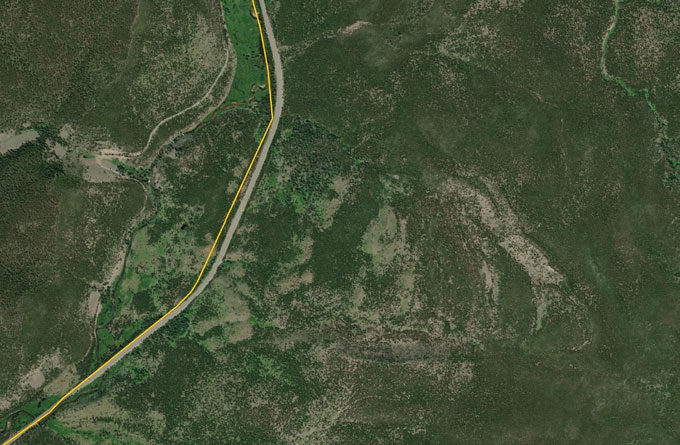DENVER — A hidden landscape riddled with landslides is coming into focus in Yellowstone National Park, thanks to a laser-equipped airplane.
Scientists of yore crisscrossed Yellowstone on foot and studied aerial photographs to better understand America’s first national park. But today researchers have a massive new digital dataset at their fingertips that’s shedding new light on this nearly 1-million-hectare natural wonderland.
These observations of Yellowstone have allowed a pair of researchers to pinpoint over 1,000 landslides within and near the park, hundreds of which had not been mapped before, the duo reported October 9 at the Geological Society of America Connects 2022 meeting. Most of these landslides likely occurred thousands of years ago, but some are still moving.
Mapping Yellowstone’s landslides is important because they can cripple infrastructure like roadways and bridges. The millions of visitors that explore the park each year access Yellowstone through just a handful of entrance roads, one of which recently closed for months following intense flooding.
In 2020, a small aircraft flew a few hundred meters above the otherworldly landscape of Yellowstone. But it wasn’t ferrying tourists eager for up close views of the park’s famous wolves or hydrothermal vents (SN: 7/21/20, SN: 1/11/21). Instead, the plane carried a downward-pointing laser that fired pulses of infrared light at the ground. By measuring the timing of pulses that hit the ground and reflected back toward the aircraft, researchers reconstructed the precise topography of the landscape.
Such “light detection and ranging,” or lidar, data reveal details that often remain hidden to the eye. “We’re able to see the surface of the ground as if there’s no vegetation,” says Kyra Bornong, a geoscientist at Idaho State University in Pocatello. Similar lidar observations have been used to pinpoint pre-Columbian settlements deep within the Amazon jungle (SN: 5/25/22).
The Yellowstone lidar data were collected as part of the 3D Elevation Program, an ongoing project spearheaded by the United States Geological Survey to map the entirety of the United States using lidar.
Bornong and geomorphologist Ben Crosby analyzed the Yellowstone data — which resolve details as small as about one meter — to home in on landslides. The team searched for places where the landscape changed from looking relatively smooth to looking jumbled, evidence that soil and rocks had once been on the move. “It’s a pattern-recognition game,” says Crosby, also of Idaho State University. “You’re looking for this contrast between the lumpy stuff and the smooth stuff.”
The researchers spotted more than 1,000 landslides across Yellowstone, most of which were clustered near the periphery of the park. That makes sense given the geography of Yellowstone’s interior, says Lyman Persico, a geomorphologist at Whitman College in Walla Walla, Wash., who was not involved in the research. The park sits atop a supervolcano, whose previous eruptions blanketed much of the park in lava (SN: 1/2/18). “You’re sitting in the middle of the Yellowstone caldera, where everything is flat,” says Persico.
But steep terrain also abounds in the national park, and there’s infrastructure in many of those landslide-prone areas. In several places, the team found that roads had been built over landslide debris. One example is Highway 191, which skirts the western edge of Yellowstone.

It’s worth keeping an eye on this highway since it funnels significant amounts of traffic through regions apt to experience landslides, Bornong says. “It’s one of the busiest roads in Montana.”
There’s plenty more to learn from this novel look at Yellowstone, Crosby says. Lidar data can shed light on geologic processes like volcanic and tectonic activity, both of which Yellowstone has in spades. “It’s a transformative tool,” he says.


